实验3:OpenFlow协议分析实践
实验3:OpenFlow协议分析实践
一、实验目的
- 能够运用 wireshark 对 OpenFlow 协议数据交互过程进行抓包;
- 能够借助包解析工具,分析与解释 OpenFlow协议的数据包交互过程与机制。
二、实验环境
- 下载虚拟机软件Oracle VisualBox;
- 在虚拟机中安装Ubuntu 20.04 Desktop amd64,并完整安装Mininet;
三、实验要求
(一)基本要求
- 搭建下图所示拓扑,完成相关 IP 配置,并实现主机与主机之间的 IP 通信。用抓包软件获取控制器与交换机之间的通信数据包。
![]()
|主机|IP地址|
| :------| ------: | :------: |
|h1|192.168.0.101/24|
|h2|192.168.0.102/24|
|h3|192.168.0.103/24|
|h4|192.168.0.104/24|
-
保存为.py文件
![]()
-
相关IP配置
![]()
-
运行命令
sudo wireshark开启wireshark抓包工具,进入wireshark界面后点击any获取全部数据包
![]()
-
先开启抓包再pingall
![]()
- 查看抓包结果,分析OpenFlow协议中交换机与控制器的消息交互过程,画出相关交互图或流程图。
- OFPT_HELLO
- 控制器6633端口(我最高能支持OpenFloww1.0)--->交换机47310端口
![]()
- 交换机47310端口(我最高能支持OpenFlow1.5)--->控制器6633端口
![]()
于是双方建立连接,并使用OpenFlow1.0
- 控制器6633端口(我最高能支持OpenFloww1.0)--->交换机47310端口
- OFPT_FEATURES_REQUEST
- 控制器6633端口(我需要你的特征信息)--->交换机47310端口
![]()
- 控制器6633端口(我需要你的特征信息)--->交换机47310端口
- OFPT_SET_CONFIG
- 控制器6633端口(请按照我给你的flag和max bytes of package进行配置)--->交换机47310端口
![]()
- 控制器6633端口(请按照我给你的flag和max bytes of package进行配置)--->交换机47310端口
- OFPT_PORT_STATUS
- 当交换机端口发生变化时,告知控制器相应的端口状态
![]()
- 当交换机端口发生变化时,告知控制器相应的端口状态
- OFPT_FEATURES_REPLY
- 交换机47310端口(这是我的特征信息,请查收)--->控制器6633端口
![]()
- 交换机47310端口(这是我的特征信息,请查收)--->控制器6633端口
- OFPT_PACKET_IN
- 交换机47310端口(有数据包进来,请指示)--->控制器6633端口
![]()
- 交换机47310端口(有数据包进来,请指示)--->控制器6633端口
- OFPT_FLOW_MOD
- 控制器通过6633端口向交换机47310端口下发流表项,指导数据的转发处理
![]()
- 控制器通过6633端口向交换机47310端口下发流表项,指导数据的转发处理
- OFPT_PACKET_OUT
- 控制器6633端口(请按照我给你的action进行处理)--->交换机47310端口
![]()
- 控制器6633端口(请按照我给你的action进行处理)--->交换机47310端口
- 相关交互图
![]()
- 回答问题:交换机与控制器建立通信时是使用TCP协议还是UDP协议?
答:交换机与控制器建立通信时使用TCP协议
![]()
(二)进阶要求
- 将抓包结果对照OpenFlow源码,了解OpenFlow主要消息类型对应的数据结构定义。
- OFPT_HELLO
struct ofp_header {
uint8_t version; /* OFP_VERSION. */
uint8_t type; /* One of the OFPT_ constants. */
uint16_t length; /* Length including this ofp_header. */
uint32_t xid; /* Transaction id associated with this packet.
Replies use the same id as was in the request
to facilitate pairing. */
};
struct ofp_hello {
struct ofp_header header;
};

HELLO报文的四个参数和代码相对应
- OFPT_FEATURES_REQUEST
![]()
struct ofp_header {
uint8_t version; /* OFP_VERSION. */
uint8_t type; /* One of the OFPT_ constants. */
uint16_t length; /* Length including this ofp_header. */
uint32_t xid; /* Transaction id associated with this packet.
Replies use the same id as was in the request
to facilitate pairing. */
};
- OFPT_SET_CONFIG
struct ofp_switch_config {
struct ofp_header header;
uint16_t flags; /* OFPC_* flags. */
uint16_t miss_send_len; /* Max bytes of new flow that datapath should
send to the controller. */
};
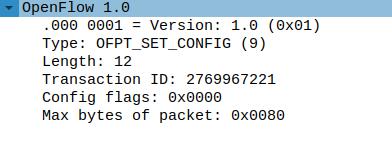
- OFPT_PORT_STATUS
struct ofp_port_status {
struct ofp_header header;
uint8_t reason; /* One of OFPPR_*. */
uint8_t pad[7]; /* Align to 64-bits. */
struct ofp_phy_port desc;
};
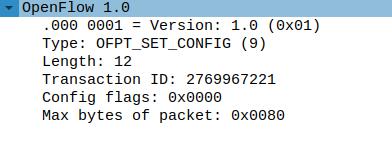
- OFPT_FEATURES_REPLY
struct ofp_phy_port {
uint16_t port_no;
uint8_t hw_addr[OFP_ETH_ALEN];
char name[OFP_MAX_PORT_NAME_LEN]; /* Null-terminated */
uint32_t config; /* Bitmap of OFPPC_* flags. */
uint32_t state; /* Bitmap of OFPPS_* flags. */
/* Bitmaps of OFPPF_* that describe features. All bits zeroed if
* unsupported or unavailable. */
uint32_t curr; /* Current features. */
uint32_t advertised; /* Features being advertised by the port. */
uint32_t supported; /* Features supported by the port. */
uint32_t peer; /* Features advertised by peer. */
};
struct ofp_switch_features {
struct ofp_header header;
uint64_t datapath_id; /* Datapath unique ID. The lower 48-bits are for
a MAC address, while the upper 16-bits are
implementer-defined. */
uint32_t n_buffers; /* Max packets buffered at once. */
uint8_t n_tables; /* Number of tables supported by datapath. */
uint8_t pad[3]; /* Align to 64-bits. */
/* Features. */
uint32_t capabilities; /* Bitmap of support "ofp_capabilities". */
uint32_t actions; /* Bitmap of supported "ofp_action_type"s. */
/* Port info.*/
struct ofp_phy_port ports[0]; /* Port definitions. The number of ports
is inferred from the length field in
the header. */
};
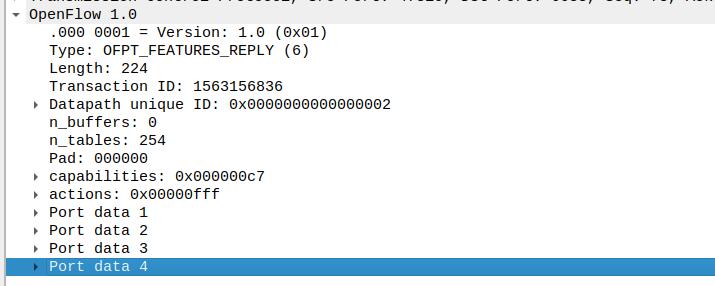
- OFPT_PACKET_IN
#交换机查找流表,发现没有匹配条目时
enum ofp_packet_in_reason {
OFPR_NO_MATCH, /* No matching flow. */
OFPR_ACTION /* Action explicitly output to controller. */
};
#有匹配条目但是对应的action是OUTPUT=CONTROLLER时
struct ofp_packet_in {
struct ofp_header header;
uint32_t buffer_id; /* ID assigned by datapath. */
uint16_t total_len; /* Full length of frame. */
uint16_t in_port; /* Port on which frame was received. */
uint8_t reason; /* Reason packet is being sent (one of OFPR_*) */
uint8_t pad;
uint8_t data[0]; /* Ethernet frame, halfway through 32-bit word,
so the IP header is 32-bit aligned. The
amount of data is inferred from the length
field in the header. Because of padding,
offsetof(struct ofp_packet_in, data) ==
sizeof(struct ofp_packet_in) - 2. */
};

- OFPT_FLOW_MOD
struct ofp_flow_mod {
struct ofp_header header;
struct ofp_match match; /* Fields to match */
uint64_t cookie; /* Opaque controller-issued identifier. */
/* Flow actions. */
uint16_t command; /* One of OFPFC_*. */
uint16_t idle_timeout; /* Idle time before discarding (seconds). */
uint16_t hard_timeout; /* Max time before discarding (seconds). */
uint16_t priority; /* Priority level of flow entry. */
uint32_t buffer_id; /* Buffered packet to apply to (or -1).
Not meaningful for OFPFC_DELETE*. */
uint16_t out_port; /* For OFPFC_DELETE* commands, require
matching entries to include this as an
output port. A value of OFPP_NONE
indicates no restriction. */
uint16_t flags; /* One of OFPFF_*. */
struct ofp_action_header actions[0]; /* The action length is inferred
from the length field in the
header. */
};
struct ofp_action_header {
uint16_t type; /* One of OFPAT_*. */
uint16_t len; /* Length of action, including this
header. This is the length of action,
including any padding to make it
64-bit aligned. */
uint8_t pad[4];
};
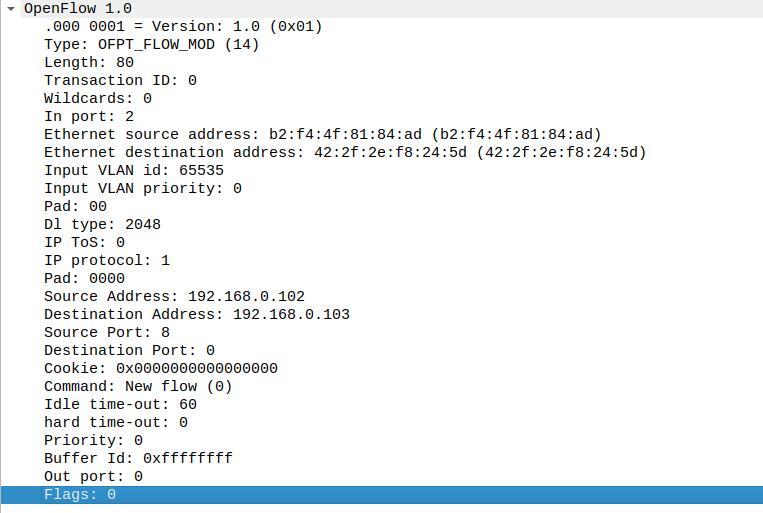
- OFPT_PACKET_OUT
struct ofp_packet_out {
struct ofp_header header;
uint32_t buffer_id; /* ID assigned by datapath (-1 if none). */
uint16_t in_port; /* Packet's input port (OFPP_NONE if none). */
uint16_t actions_len; /* Size of action array in bytes. */
struct ofp_action_header actions[0]; /* Actions. */
/* uint8_t data[0]; */ /* Packet data. The length is inferred
from the length field in the header.
(Only meaningful if buffer_id == -1.) */
};
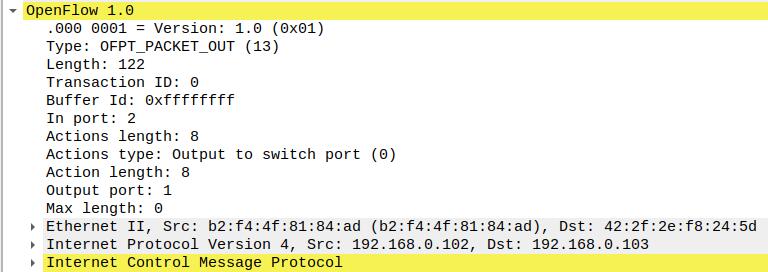
四、实验心得
实验过程中抓包后寻找所需的数据报文需要一定的耐心,为避免在寻找中途出现卡机的现象,最好先把抓包结果保存下来,这样不至于出现错误要重新抓包重新截图。要看懂OpenFlow源码比较困难,所以只能对照抓包结果和老师给的pdf大致了解一下OpenFlow主要消息类型对应的数据结构的定义。这次实验没有碰到什么问题,按部就班做下来非常顺利。通过这次实验我学会了分析wireshark抓的通信数据包并由此更直观地了解到OpenFlow协议中交换机和控制器的消息交互过程。


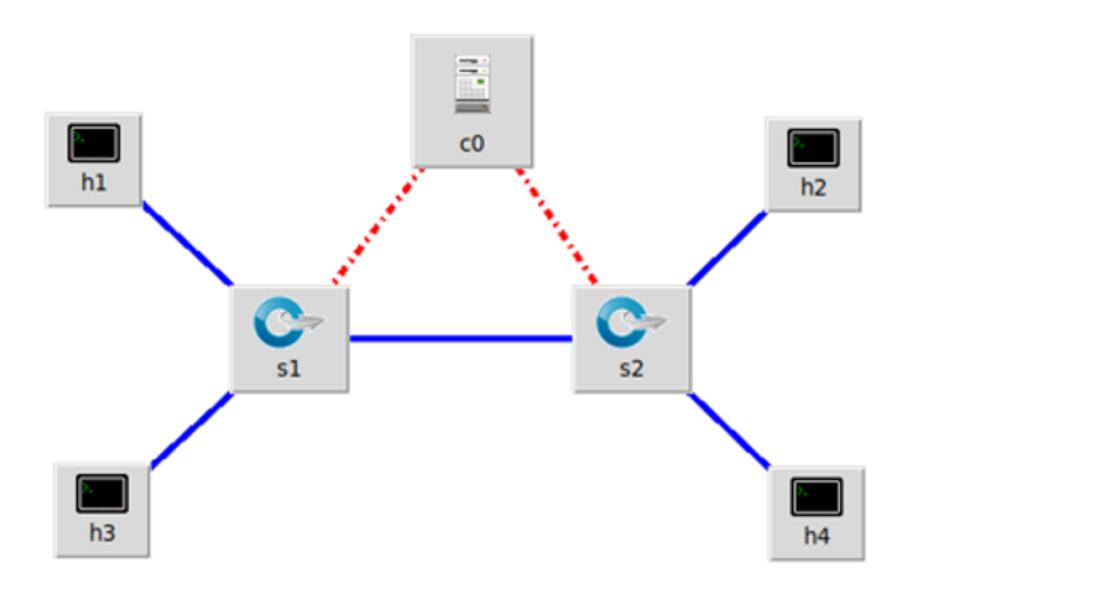

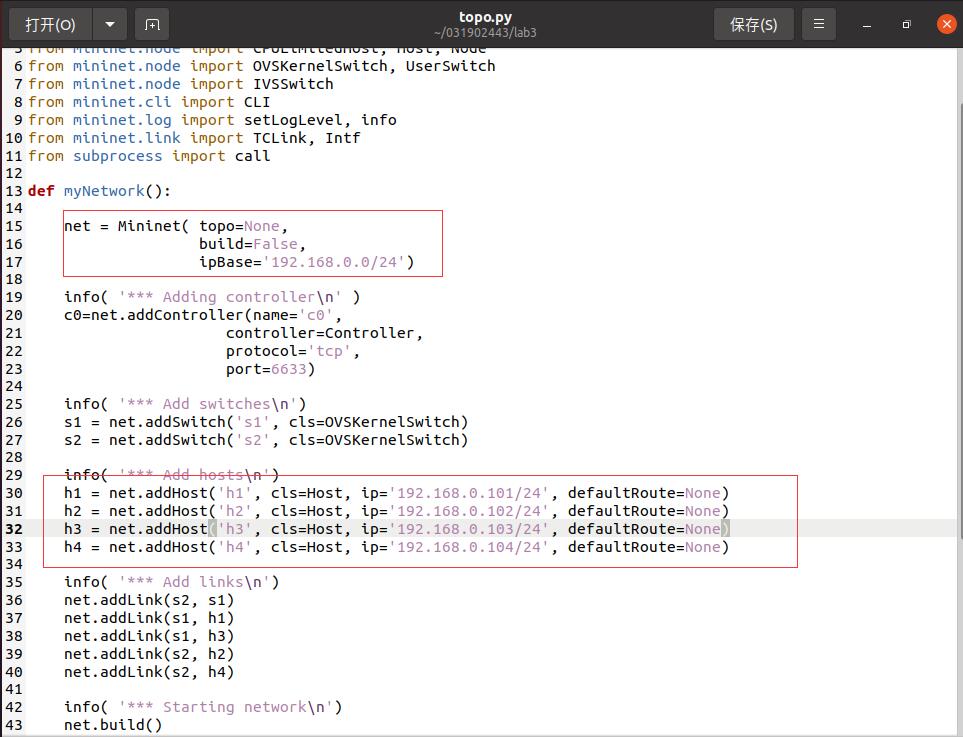
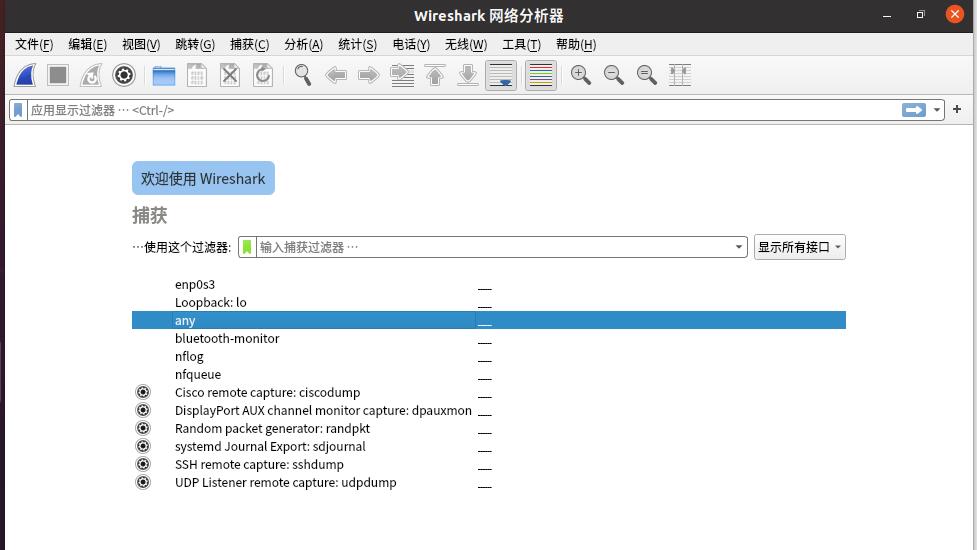
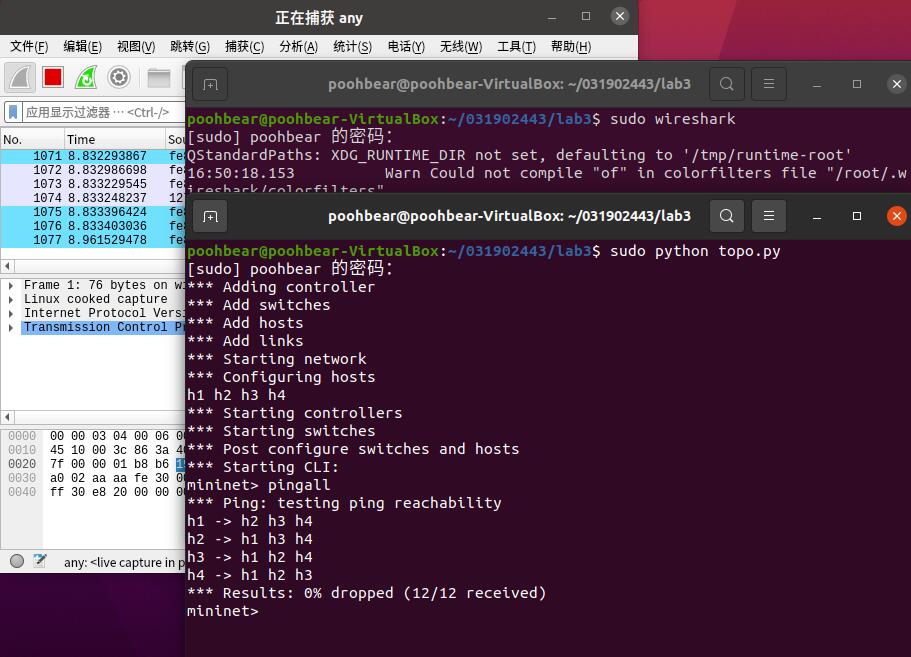
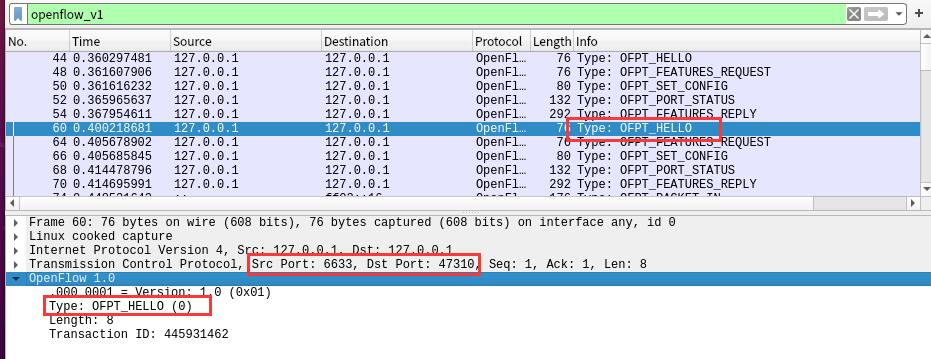
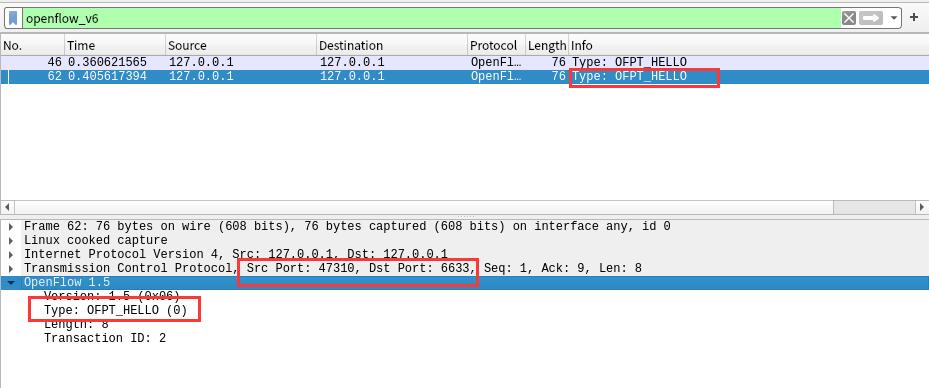
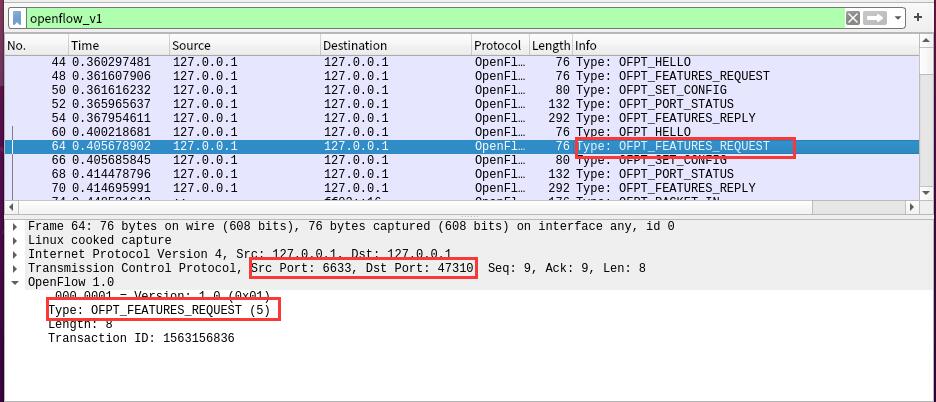
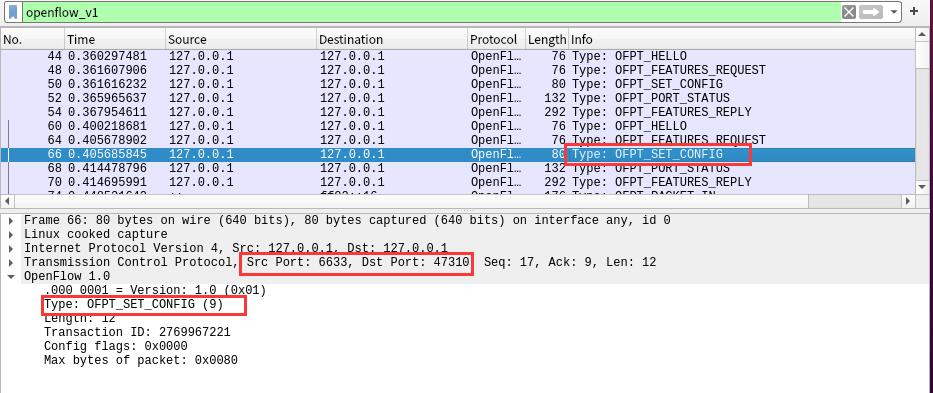
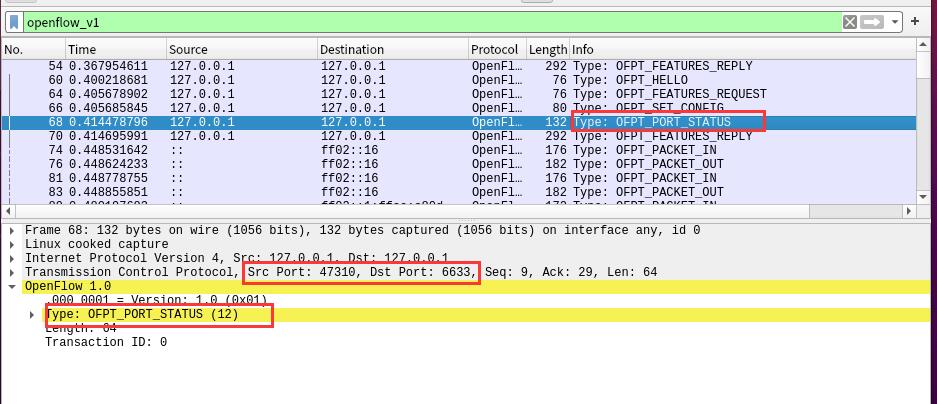
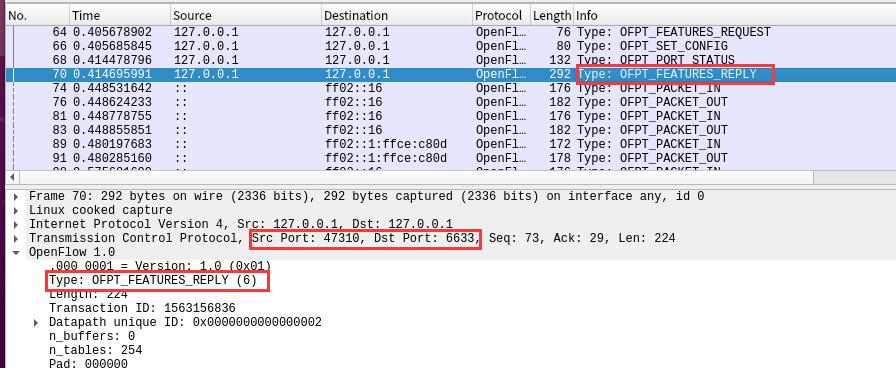
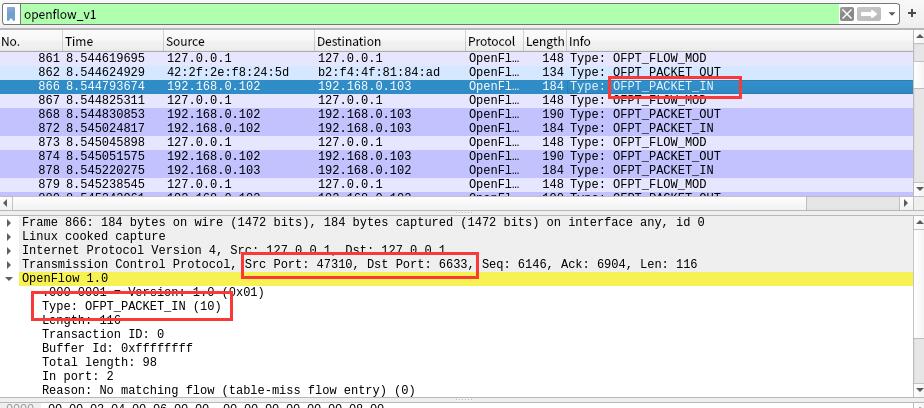
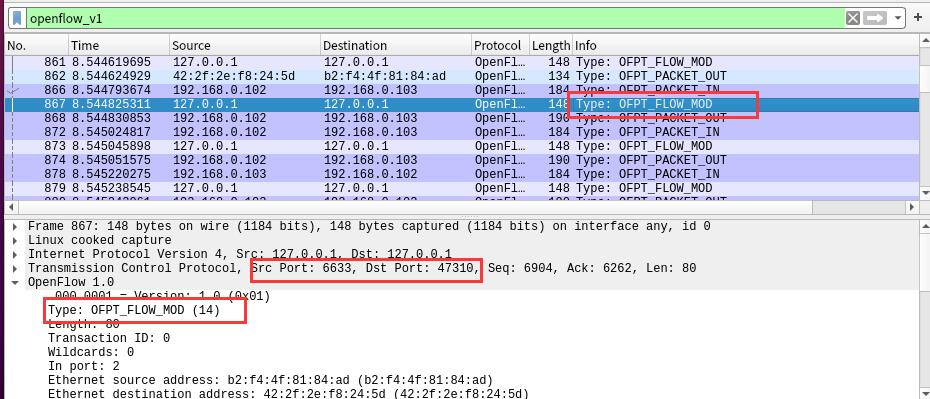
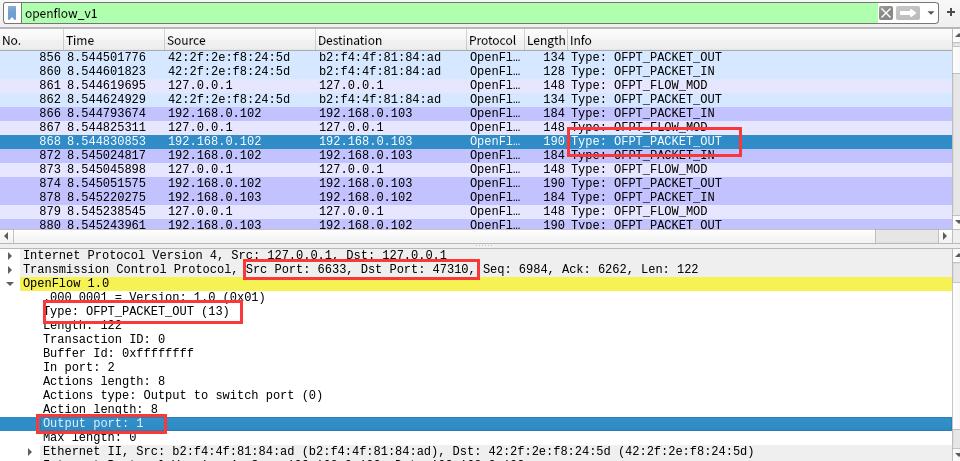
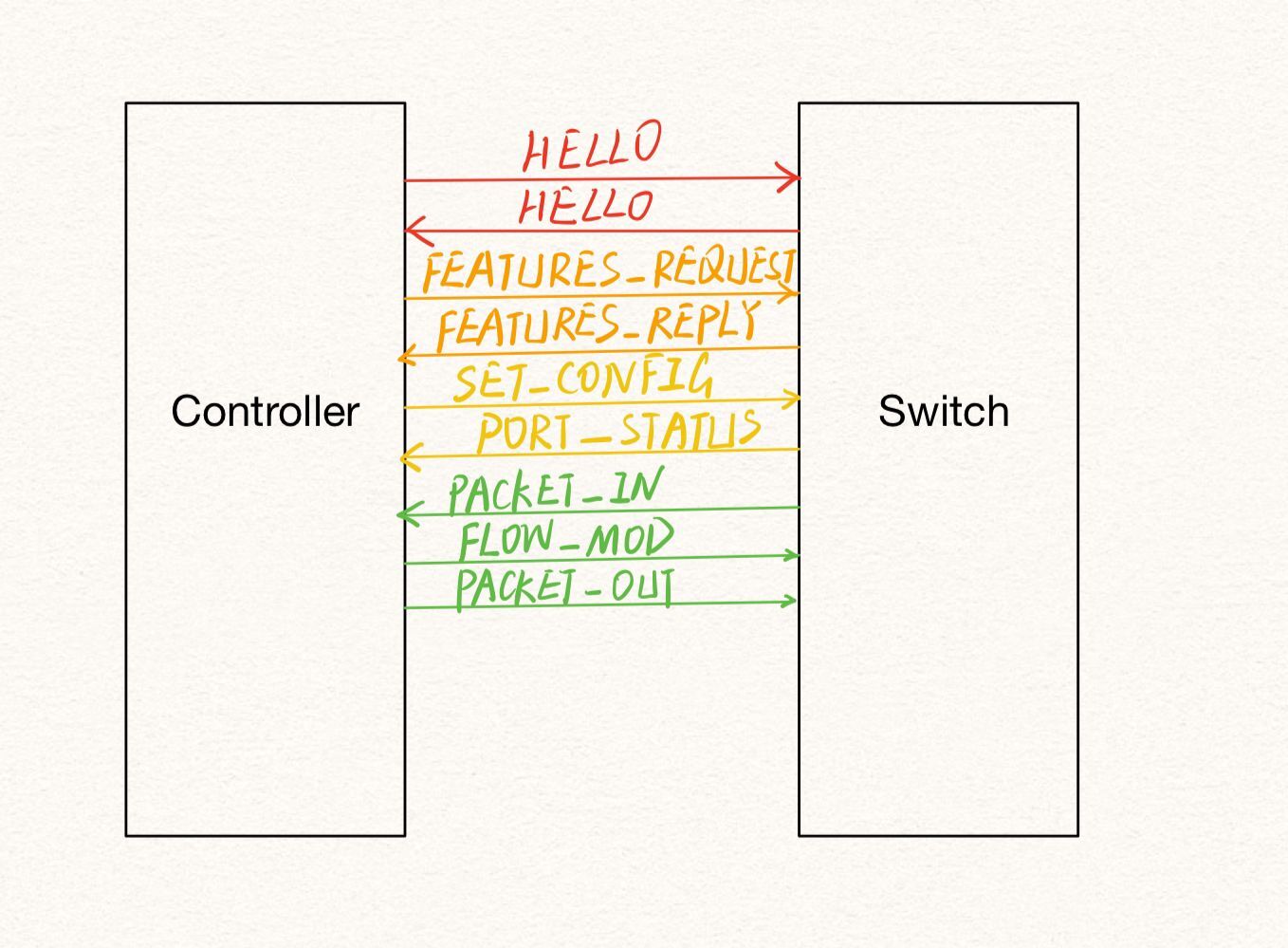



 浙公网安备 33010602011771号
浙公网安备 33010602011771号